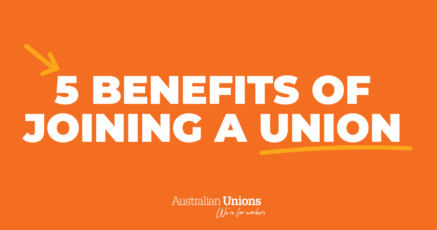The Early Childhood Education and Care Strategy
-
Restore the free childcare crisis arrangements, and develop a long-term plan to ensure that childcare and early childhood education is permanently free.
-
Invest in building new high-quality, publicly funded non-profit childcare centres.
-
Fund universal access of 15 hours of preschool education each week for all 3 and 4 year old children, delivered by qualified early childhood educators.
-
Ensure early childhood educators are securely employed and fairly paid
In July 2020, Australian Unions released our plan for National Economic Reconstruction. The first part of that plan was the provision of appropriately funded, free childcare.
Back in 2020, as the pandemic started to rage across the world, the the Commonwealth government recognised that childcare is an essential service. It committed $1.6 billion to offsetting childcare fees for parents during the pandemic. The Government accepted that quality and affordable childcare is a prerequisite for preserving jobs and eventually reopening the economy.
Suddenly, as quickly as it was introduced, the government snapped back this important and visionary policy.
It was no coincidence that the early childhood education and care sector – staffed 97% by women – was the first to lose wage subsidies under the JobKeeper program, at the same time as burdensome childcare fees are re-imposed on working parents. This was a ‘double whammy’ for women workers, who already bear a disproportionate share of the job losses resulting from the pandemic (due to their concentration in consumer service industries and more insecure jobs).
This recognition of the vital importance of early child education and care, and a national commitment to providing universal and free services, must be continued.
Part of reconstructing our national economy after COVID-19, and in particular repairing the employment prospects for women workers, must be a broader strategy to roll-out high-quality, publicly-funded not-for-profit childcare services befitting a modern industrial nation.
What’s our national economic reconstruction plan?
Reconstructing the economy after COVID-19 must fix this long-standing barrier to women’s full economic activity and production. The new Early Childhood Education and Care Strategy would endeavor to do this, and includes several components:
- A capital cost investment fund, initially endowed with $2.5 billion to be allocated over three years, to construct new high-quality publicly-funded not-for-profit childcare facilities. This program will create 6,500 person-years of employment in construction.
- Provision of permanently free childcare. Restore the free childcare crisis arrangements for 12 months while a full-fledged plan for permanently free childcare is developed with relevant stakeholders.
- Permanent ongoing funding of universal access of 15 hours of preschool education per week for all 3- and 4-year-old children, delivered by fully qualified early-childhood education teachers. The expansion of universal access to include 3-year-olds would support the creation of about 30,000 jobs for ECE teachers and support workers.
- Ensure early childhood educators are securely employed and fairly paid to support the ongoing employment of staff who are vital to educating our children.
What are the benefits of free, publicly funded early childhood education and care?
Economic studies have confirmed that public investments in early childhood education and care literally pay for themselves, once the additional output (and taxes) resulting from women’s increased labour force participation are considered.
Women will be able to return to work
Women’s labour force participation in Australia is far below rates in comparable industrial countries. If Australian women between 25 and 45 participated in the labour market as much as men do, the economy would benefit from 475,000 potential new workers – providing an enormous boost to economic growth, government revenues, and family incomes. If those women were working, Australia’s GDP would be $70 billion per year higher, and family incomes would be boosted by $30 billion per year.
Better education benefits for children
Early childhood education also provides children with significant educational benefits – helping to improve their employment, income and health outcomes later in life. Universal access to early childhood education and care is thus essential not just to increase women’s participation in the workforce, but also to better the lives of future generations of children.
There’d be a stimulus boost to the economy
The provision of appropriately funded, free childcare would boost the disposable income of households with young children and provide an effective form of stimulus to consumer spending and, in turn, overall demand in the economy.
Building new early childhood education centres would boost the construction sector
Constructing a quality, accessible, publicly-funded, not-for-profit early child education and care system holds outstanding potential to contribute to Australia’s post-COVID
reconstruction.
In short…
Establishing free early childhood education and care is a highly effective job-creation stimulus in the short term; it has the capacity to boost long-term labour force participation and hence economic growth; it will enhance the well-being and capacities of the children who benefit from this education and care. It literally ‘pays for itself’, via the tax revenues paid from the increased employment and production of employed parents.





SHARE:
Providing free early childhood education and childcare is vital for the economic recovery